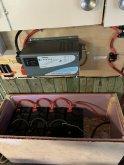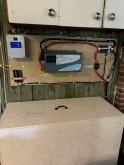Hello everyone! I live in the Upper Peninsula of Michigan where the winter temperatures can drop to -20 degrees F. I’ve been asked to install a battery bank where a generator is used as the charger at a hunting cabin in the woods. The cabin is used mostly in the summer and fall for deer season, but it is still used in the winters every other weekend for rabbit hunting. I have the system planned out, and contacted local suppliers about what they think should be done to preserve the batteries and render them useful through the winters. They suggested lead acid batteries, fully charging them then disconnecting all loads before leaving camp in the winter. This seems like a good suggestion, but what would I do if I wanted to use the batteries for the couple weekends I am there in the winter? I’d assume they’d be pretty cold.
Thanks in advance.
Daren
Thanks in advance.
Daren






